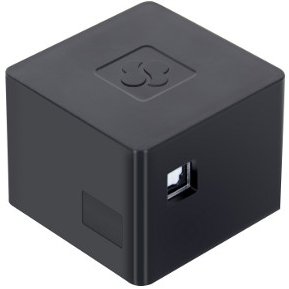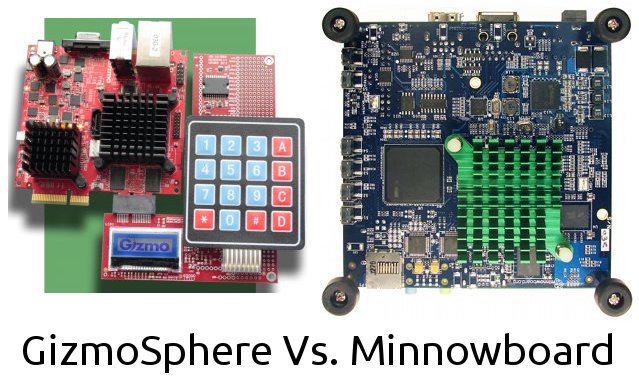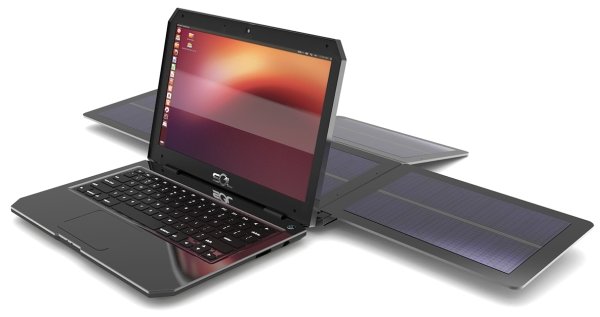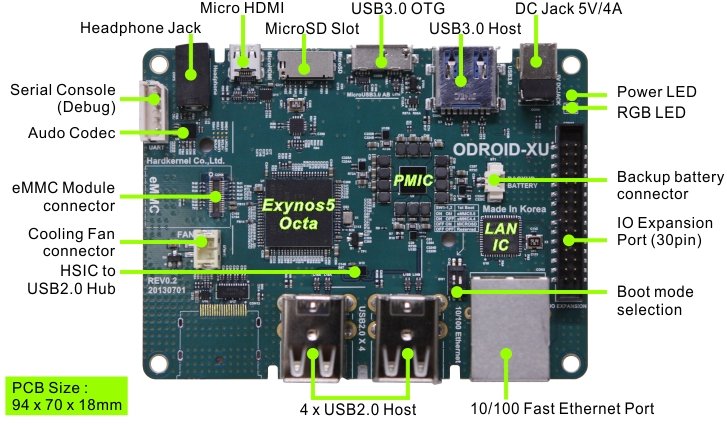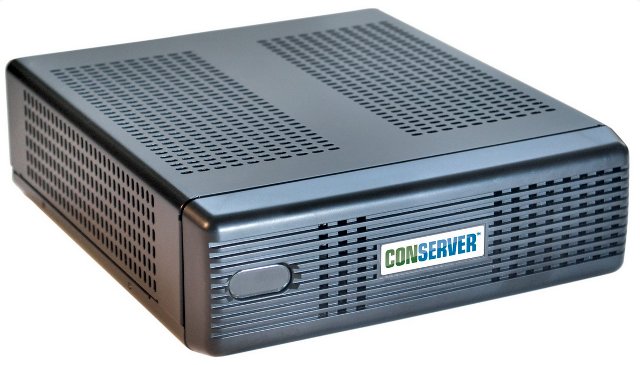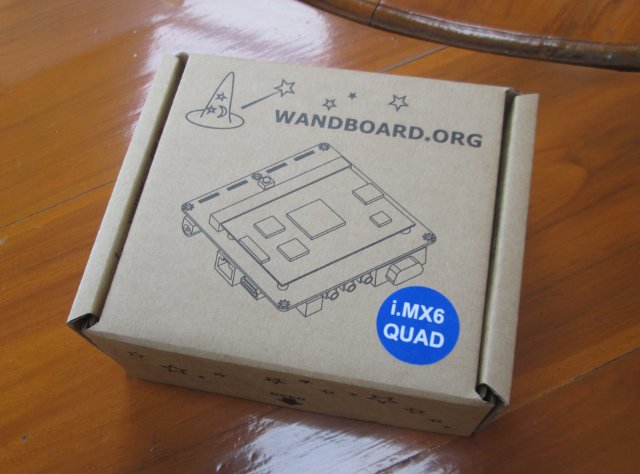SolidRun has been providing tiny development platform such as Cubox and Cubox Pro featuring Marvell ARM compatible processors. However, the price of those platforms are well over $100, so the company decided to provide lower cost development platforms (Cubox-i) based on Freescale i.MX6 Solo/Dual Lite/Dual/Quad that sells for $45 and up. There are four versions: Cubox-i1 – Freescale i.MX6 Solo, 512 MB RAM, 10/100M Ethernet, optional Wi-Fi/Bluetooth module. Price: $44.99 Cubox-i2 – Freescale i.MX6 Duallite, 1GB RAM, 10/100M Ethernet, optional Wi-Fi Bluetooth module. Price: $69.99 Cubox-i2Ultra – Freescale i.MX6 Dual, 1GB RAM, Gb Ethernet (470 Mbit real), Wi-Fi and Bluetooth, SATA II. Price: $94.99 Cubox-i4Pro – Freescale i.MX6 Quad, 2GB RAM, Gb Ethernet (470 Mbit real), Wi-Fi and Bluetooth, SATA II. Price: $119.99 The devices measure 55mm x 55mm x 42mm. The full specifications are better seen in the comparison table found in SolidRun website. The 4 models all boot […]
Linaro 13.08 Release With Linux Kernel 3.11 and Android 4.3
Linaro 13.08 has been released with Linux Kernel 3.11-rc6 (stating), Kernel 3.10.9 (LSK – beta), and Android 4.3. This month is the first release based on Android 4.3, which was only pushed to AOSP at the end of last month. I can also see work on new SoCs/hardware this month with Texas Instruments Keystone II ARM Cortex A15+DSP SoC and Fujitsu AA9 board (Which processor?, I could not find out). A lot of work also appears to have gone in OpenEmbedded, further optimizations have gone into NEON optimized AES encryption in OpenSSL, and more. It’s also the first time I can see a Ubuntu Raring engineering build image for HighBank (Calxeda Energycore). Here are the highlights of this release: Android Engineering Android stack was tuned to achieve 100% CTS pass result on Android 4.3 Analyzing the UEFI EDK II boot loader for Android completed, implementation of fastboot application and USB […]
GizmoSphere vs Minnowboard – AMD and Intel x86 Embedded Boards Comparison
The Gizmo Explorer Kit is an embedded kit based on a development board powered by AMD G-Series G-T40E dual core APU that’s available since the beginning of the year. The Minnowboard is another new x86 embedded board, but this time based on Intel Atom E640 processor. Both cost $199, so a side-by-side comparison might be useful,and GizmoSphere team released a comparison table for both board, and is offering free shipping for the week with “Sharkweek2013”. Let’s have a look. The company only provided the table in image format, so I’ll reproduce it “as is” below, and see if there may be some correction or addition afterwards, the table has been designed by one of the competitors. The parts in yellow are supposed to highlight advantages of the GizmoShpere against the Minnowboard, but they conveniently “forgot” to highlight advantages of the Minnowboard. [Update 13/08/2013 – Gizmo guys have updated their table […]
WeWi SOL Ubuntu Laptop is Powered by an Intel Atom Processor and Solar Energy
WeWi Telecommunications has designed a solaptop (Solar-powered laptop) with 4 foldable solar panels in order to recharge the battery. WeWi SOL is powered by Intel Atom D2500, with 4GB RAM, features a 13.3″ display, and runs Ubuntu. It will be sold for only $300 to $400. WeWi SOL specifications: CPU – Intel Atom D2500 @ 1.86 GHz Dual Core, Intel 945GSE + ICH7M GPU – Built-In Intel GMA3600 Graphics, 1080p HD Video System Memory – 2 to 4GB DDRIII SDRAM (Kingston) Storage – 2.5” SATA HDD 320GB (Seagate) + Card reader (SD/MS/MMC) Display – 13.3″ LCD, WXGA, 1366 x 768 Video Output – HDMI Audio – Realtek ALC661 HD Audio, built-in stereo speakers, internal mic + 3.5mm headphone jack Connectivity: 10/100M Ethernet 3G/4G World/multimode LTE Modem GPS (gpsOne Gen8A) WiFi – MIMO 802.11b/gn (2.4/5GHz) Bluetooth – Integrated Digital Core BT4.0 USB – 3x USB 2.0 Camera – 3MP Battery Operating Time […]
$149 Hardkernel ODROID-XU Octa Core big LITTLE Development Board
Just a few days after noticing code for ODROID-XU in hardkernel repository, the company has now launched ODROID-XU development board powered by Exynos 5410 octa core processor with 2GB RAM, USB 3.0, and more for just $149 (as long as you order in August, $169 after that). Here are ODROID-XU hardware specifications: SoC – Samsung Exynos5 Octa Cortex-A15 and Cortex-A7 big.LITTLE processor with PowerVR SGX544MP3 GPU System Memory – 2GB LPDDR3 RAM Storage – micro SD slot, eMMC 4.5 connector Video Output – micro HDMI + MPI LCD interface and Touch screen I2C ports (IPEX-40PIN) Audio – micro HDMI, headphone jack, MAX98090 Audio Codec Connectivity – 10/100M Ethernet via USB 2.0 (LAN9730) USB – 1x USB 3.0 Host, 1x USB 3.0 OTG, and 4x USB 2.0 Host Expansion Header – 30 pins (GPIO/IRQ/SPI/ADC) Misc – PWM connector for Cooler, Power Supply – 5V/4A (Plug specification is inner diameter 2.1mm and […]
Freescale i.MX6 Based Server Systems – Cornfed CONSERVER and Ventana Network Processing Boards
I usually spend most of my time writing about low cost hardware in this blog, but in this post, I’ll deal with higher-end and more expensive devices based on Freescale i.MX6 with Cornfed CONSERVER Server System and corresponding CONSERVER motherboard, as well as Ventana Network Processing Boards. Cornfed CONSERVER Conserver is a low power high-performance ARM processor server system based on Freescale i.MX6 with 4GB RAM, Gigabit Ethernet, and SATA. The hardware specifications are as follows: SoC – Freescale i.MX6Q Quad Core ARM Cortex A9 processor @ 1.2 GHz System Memory – 4 GB DDR3 RAM Storage – ?? GB NAND Flash + 1x SATA2 connector for HDD/SSD Connectivity – 1x Gb Ethernet port USB – 4x USB Host ports Video Output – 1x HDMI port Misc – RS-232 Serial port Power Supply – 35W Internal AC Power Supply Dimensions – Mini-ITX form factor The system is preloaded with Ubuntu, and […]
Linaro 13.07 Release With Linux Kernel 3.10.1 and Android 4.2.2
Linaro 13.07 has been released with Linux Kernel 3.10.1 (both baseline and stable versions), and Android 4.2.2. It’s summer time, so activity seems to have slowdown a bit, yet improvements have done to LAVA with the first LAVA Multi-purpose Prove (LMP) setup, and Linaro has released build with Linux 3.10.1, Ubuntu Raring, OpenEmbedded (ARMv8), and Android. For the very first time, there’s even an Android 4.2.2 community build for HiSilicon K3V2 hardware (HiSilicon Hi4511 development platform). Here are the highlights of this release: LAVA LAVA Core VExpress A9 test images no longer use the master image’s boot loader Support added for interactive bootloader commands. Support for OpenID / Crowd added for LAVA. LAVA Master images updated on images.validation.linaro.org LAVA Multi-node – Multi-Node support has an initial implementation which can support communication between nodes under test via the use of a GroupDispatcher. LAVA Lab Capabilities – LMP (LAVA Multi-purpose Probe) prototypes […]
Wandboard Quad Unboxing, Getting Started with Android and Linux (via The Yocto Project)
After my review of the Wandboard Dual in February, I’ve now received Wanboard Quad development board powered by Freescale i.MX6 Quad Cortex A9 processor, with 2 GB RAM, HDMI output, Gigabit Ethernet, and SATA. The board is available from several distributors including Mouser ($139), DigiKey ($144.38) and FutureElectronics ($125). I’ll start by showing some unboxing pictures of the board, as well as pictures of Wandboard Dual and Quad side-by-side. Then I’ll explain how to install Android and Linux on the board, build the images from source, run some benchmarks, and test different features. Wandboard Quad Unboxing Ive received the board via UPS in a large box that contained the package below. This is exactly the same as Wandboard Dual, except for the sticker. There’s just the board inside the package, and it would just look like Wandboard Dual with all connectors on the top, and the EDM module at the back, […]


